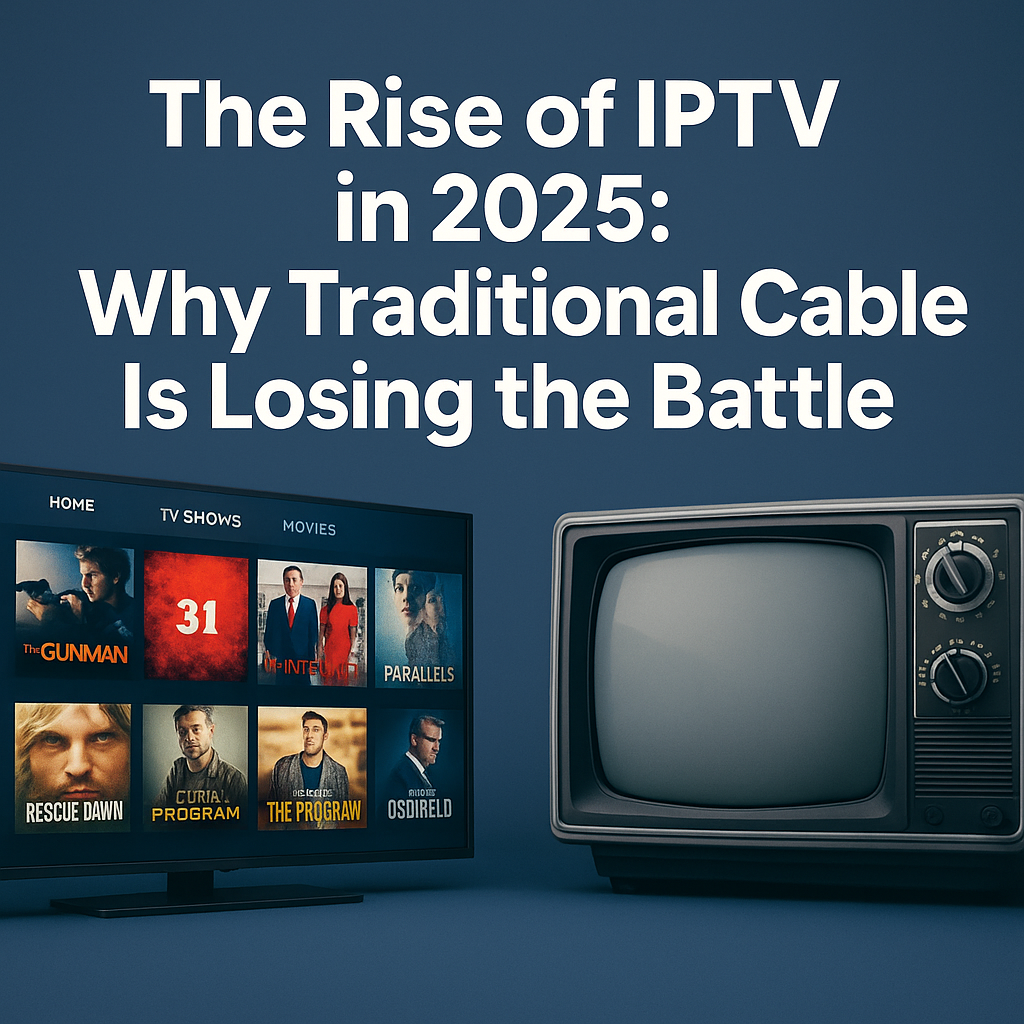
As we move further into the digital era, one thing is becoming crystal clear — traditional cable television is rapidly becoming a relic of the past. In 2025, IPTV (Internet Protocol Television) continues to revolutionize how audiences consume content, offering a modern, flexible, and user-centric alternative to the outdated cable model.
This article explores why more people are cutting the cord, how IPTV is dominating the market, and what this means for the future of entertainment.
1. What Is Driving the Shift from Cable to IPTV?
Several factors are fueling the shift:
- Flexibility: IPTV allows users to watch content on demand — anytime, anywhere.
- Cost-Effectiveness: Cable packages are often expensive and include unwanted channels. IPTV offers custom subscriptions.
- Device Compatibility: With IPTV, users can stream content on smart TVs, smartphones, tablets, and even gaming consoles.
- No Long-Term Contracts: Most IPTV services operate on a monthly subscription basis — no commitments, no stress.
2. How IPTV Delivers Better Value
Users are now looking for personalized and on-demand experiences. IPTV gives viewers:
- Access to thousands of channels worldwide
- Premium sports, news, and movie content
- High-definition (HD) and even 4K streaming
- Multi-device streaming with parental controls and recording options
All at a fraction of the price of traditional cable services.
3. The Role of Technology in IPTV’s Growth
Behind the scenes, technology is a major driver:
- 5G and Fiber Internet: Faster internet speeds ensure smoother streaming with less buffering.
- Cloud-Based Infrastructure: IPTV platforms rely on the cloud, allowing for scalability and improved reliability.
- Smart Recommendations: AI-powered engines suggest shows and movies based on your preferences.
These innovations make IPTV not just an alternative — but a superior choice.
4. Consumer Behavior in 2025
Studies show that over 65% of viewers under 40 now prefer streaming over traditional cable. Viewers want content control, zero ads, and the freedom to choose their own entertainment ecosystem.
Millennials and Gen Z are leading the charge, but even older generations are now embracing IPTV for its ease of use and variety.
5. What’s Next?
Expect to see:
- More integration with AI for personalized content curation
- Interactive advertising tailored to user behavior
- A growing market of independent IPTV providers challenging legacy broadcasters
IPTV is no longer the future — it’s the present.
Conclusion
The battle between IPTV and traditional cable is over — and IPTV has won. In 2025, the numbers, the experience, and the innovation all point in one direction: toward a smarter, faster, and more enjoyable viewing experience.
If you’re still paying for cable, it may be time to reconsider.
